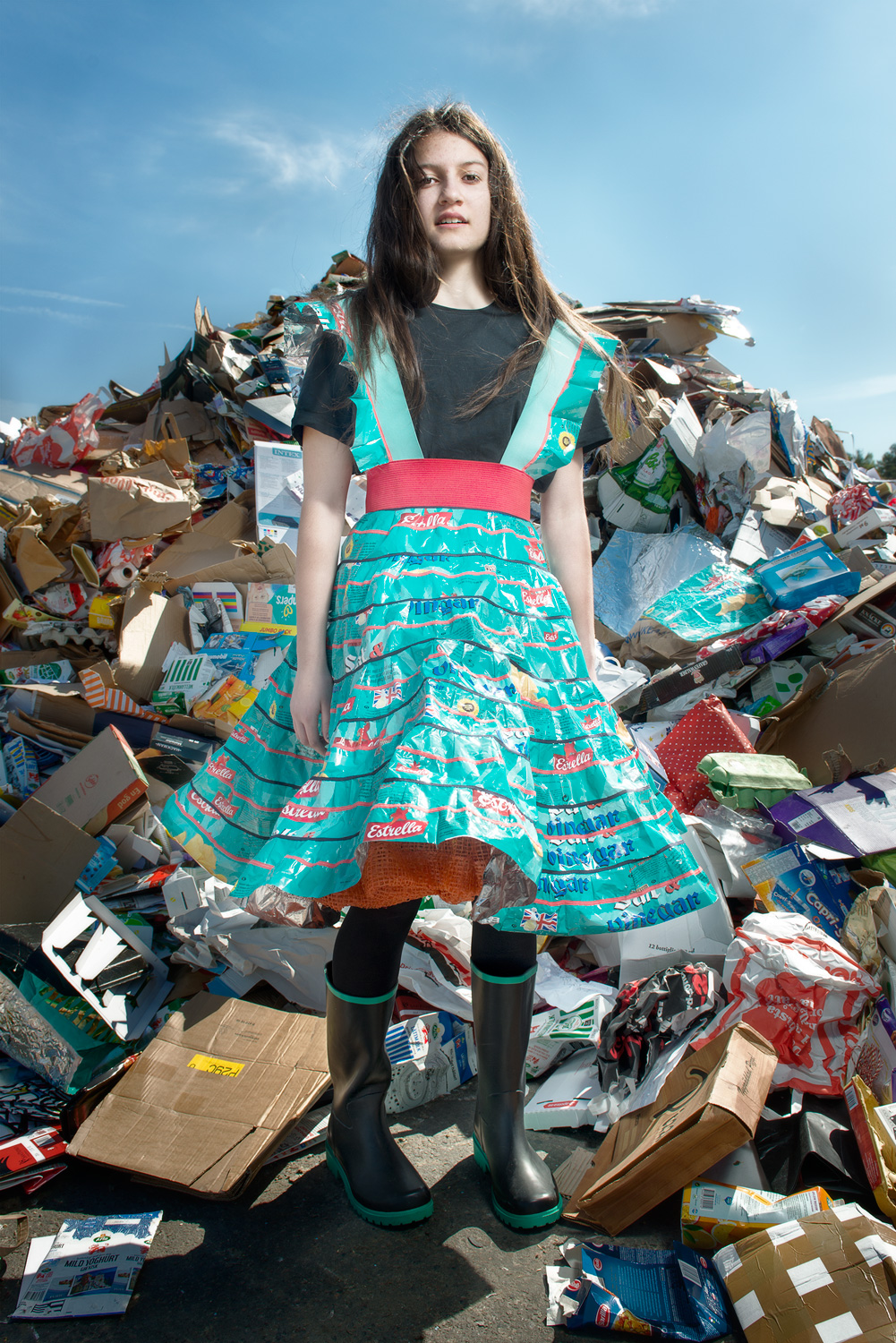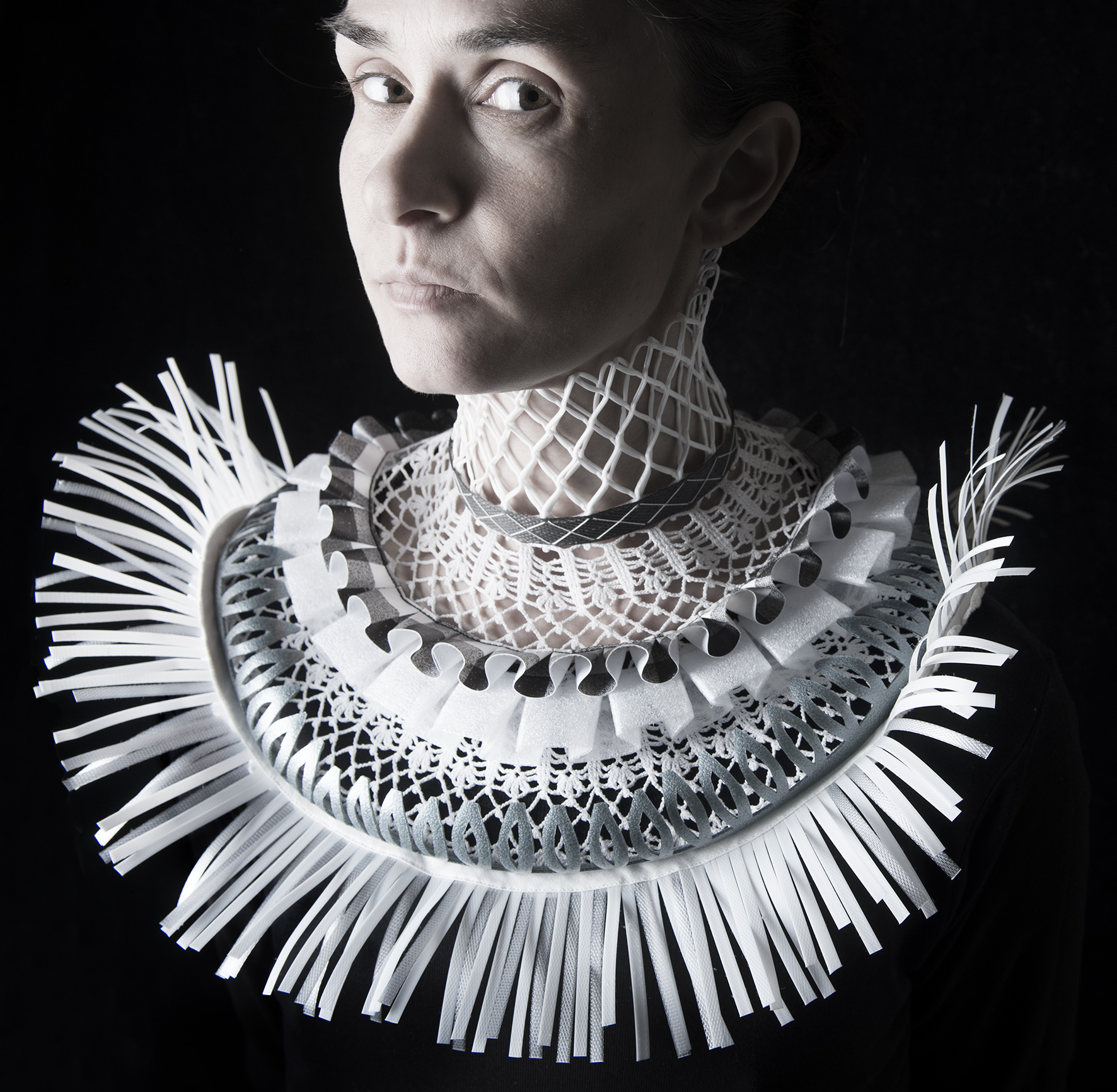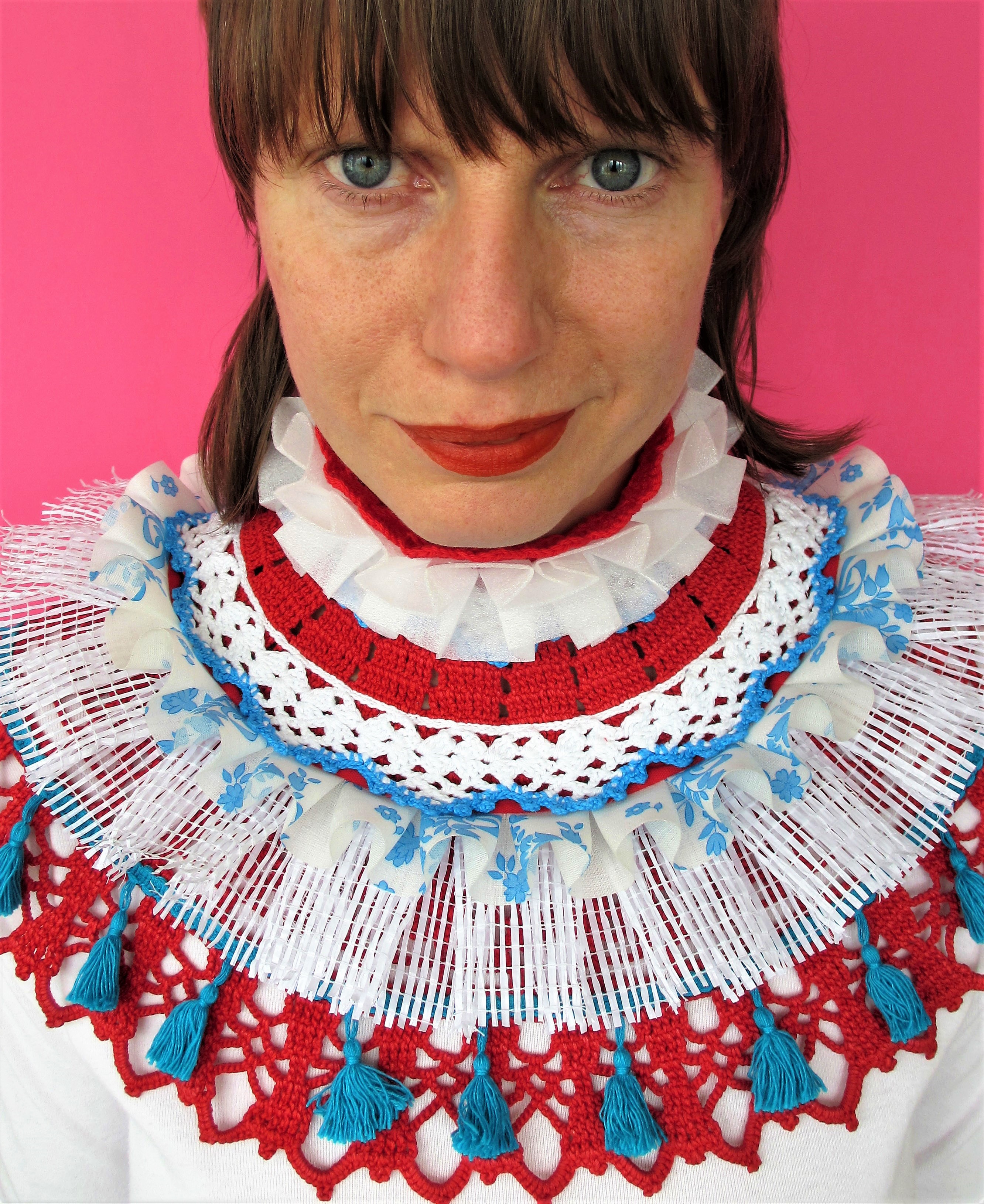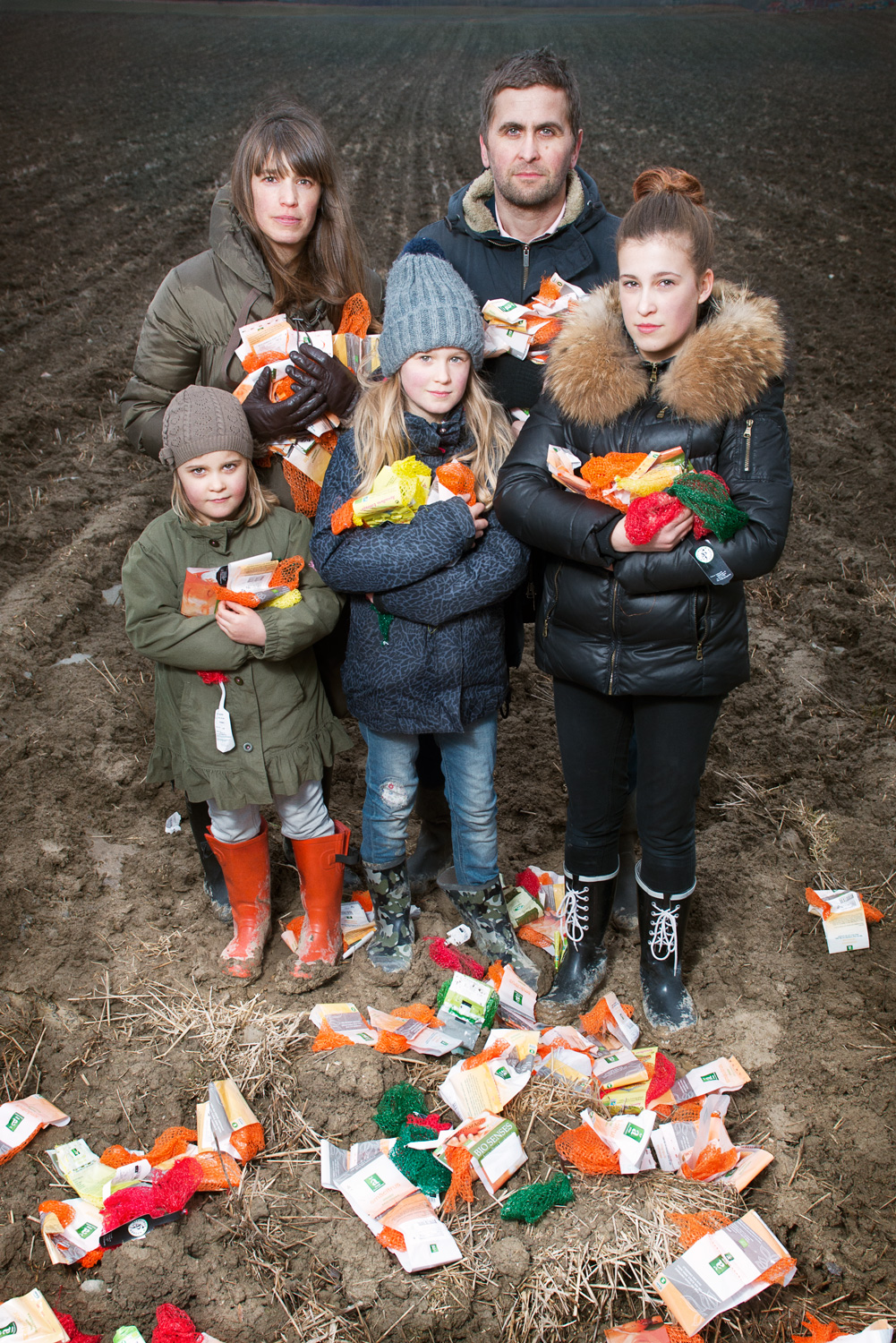
“Project Precious Trash” (2016), Photo: Fredrik Sederholm
Preciousness Once Disposed, Reimagined: Johanna Tornqvist
Interview by Olivia Ann Carye Hallstein
Johanna Tornqvist applies her studies in folklore and Swedish traditions to contemporary issues related to waste materials and ecological degradation. Her work has expanded to explore the health care industry by including pill packets as material. She uses her Swedish surroundings as well as her international experiences to draw parallels between aesthetics and contemporary lifestyle related issues. Both elaborate and haunting, her fashions sit at the precipice of an industry shrouded in ecological and ethical issues and solutions related to material choice.

“Vingklippt” (2014), Photo: Fredrik Sederholm
what does the human of today have a superfluous of? Trash.
In your work, you create precious wearable objects out of disposed materials. What was your inspiration to begin this work?
I was educated as a fashion designer in the 80's, but soon left the fashion industry as I could not cope with their ethics. Further on, I worked with craft in different materials, and I became more and more interested in the ecological and ethical aspect of the fashion industry and wanted to merge this with my craft.
After my grandmother passed away, I found in her belongings all kinds of materials that she had collected over the years, as you did in the old times. These included buttons, ribbons and laces from old clothes and bedclothes. I thought to myself: she grew up in a time where everything was reused but grew old in a time when everything is bought new. I saw her collecting these objects as treasures and I wanted to make something out of them. Since they were only small and uneven pieces, the work became jewelry.
Later on, I became more and more radical in my thinking: what happens if I use only the material that we have nearby, as we used to in the old times? Back then it was wool, wood or clay, but what does the human of today have a superfluous of? Trash.

“Side Effects” (2017), Photo: Tomas Bjorkdal
I reflected upon how we sometimes need these medications to survive, or to as a way to have a tolerable existence, or just to cope with a modern way of life.
And nearby materials are so wide ranging! Recently, you have expanded this project to include medical waste materials. How have you forged the connection between jewels and daily medication, a life-saving necessity for many?
The project Side Effects came at first from the fact that there is an enormous amount of overabundance of disposable materials in the health care industry. As a result of my interest in waste management, I decided to dive into the world of disposable material related to healthcare. This was “in” before the pandemic, but it was very difficult to get hold of material because of potential contamination risk. So, the material I was able to access was medical trash we have in our households, mostly blister packs.
Due to illness in my proximity that I was personally affected by, I was aware of both the advantages and disadvantages of medication. I reflected upon how we sometimes need these medications to survive, or to as a way to have a tolerable existence, or just to cope with a modern way of life. Those little pills many of us take, are essential in many people’s lives. But there is a lot of disposable material around them and also a lot of transportation costs due to all the air around the blister packs. Medication and chemicals are also prominent in our oceans and in our drinking water. We are beginning to grip more and more the impact these have on our lives in many different aspects.

“Celestial Twin: röd kopia” (2012)
Nowadays I don´t choose my materials, I use what there is.
Your fashions often include bright and crocheted or knitted materials or wearable decorations that are reminiscent of folkloric Swedish aesthetics. How have your travels and historical research influenced the style you are creating? Is there something specific in the culture that interests you in the connection to upcycling?
I have always been inspired by folklore from all over the world. And also surprised by the similarity of many ornamental traditions in many countries even if they exist on opposite sides of the planet.
Recycling and upcycling have always been part of craft in folklore traditions and are considered a natural way of using materials. It is the present time´s way of exploiting and using up natural resources that is not normal.
My previous work had a lot of inspiration from different folkloristic traditions. But my work nowadays is more focused on the material I get and find and how I can embellish and make a nonprecious material precious. Nowadays I don´t choose my materials, I use what there is.

“Project Precious Trash” (2016), Photo: Fredrik-Sederholm
It is in the way you handle the material, that you make it precious.
The work you do is a wonderful example of upcycling rather than recycling as it gives the disposed objects a more precious life than when they started. How are you responding to the sustainability of the fashion industry?
Project Precious Trash was a project I made about clothes and consumption where I highlighted different aspects of the fashion industry. It’s a really dirty business, as many are increasingly aware, both in ethics as well as ecological and social sustainability. My aim has always been - how can we embrace glamor and adornment but still be part of a sustainable lifestyle?
For many years I have worked with the aspect of what we see as precious versus what we see as useless. And how our point of view has changed over the years.
I´m also interested in the aspect of craft and how today´s humans have largely lost their skills to work with their hands. Only the work of the brain is promoted. In this part of the world, we have therefore become completely dependent on what is produced at the other side of the world.
By using trash materials, I want to change focus from the material away from whether it is precious or not. Instead, I would like to highlight the work of the hands. It is in the way you handle the material, that you make it precious.

Johanna Tornqvist